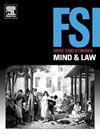进化犯罪学的一个案例:引入报复和互惠模型
Q1 Social Sciences
引用次数: 0
摘要
我们生活在一个互惠的世界里——当别人对我们微笑时我们会微笑,当我们感到不公正时我们会生气,即使我们无法解释为什么也会支持社会规范。这篇论文阐明了最不可能解释犯罪的机制之一:合作。通过结合神经科学、进化生物学和行为经济学的知识,这篇理论论文提出了可以帮助我们理解犯罪的证据,并将其组织成一个报应和互惠模型(RRM)。RRM有可能帮助我们退后一步,看看犯罪行为如何可能是犯罪学领域不应忽视的进化机制的结果。本文章由计算机程序翻译,如有差异,请以英文原文为准。
A case for evolutionary criminology: Introducing the retribution and reciprocity model
We live in a reciprocating world – we smile when someone smiles at us, get angry when we perceive injustice, and support the social norm even when we cannot explain why. This paper sheds light on one of the most unlikely explanatory mechanisms of crime: cooperation. By combining knowledge from neuroscience, evolutionary biology, and behavioural economics, this theoretical paper presents the evidence that could help us understand crime and organises it into a Retribution and Reciprocity Model (RRM). RRM has the potential to help us take a step back and see how criminal acts may be an outcome of evolutionary mechanisms that the field of criminology should not overlook.
求助全文
通过发布文献求助,成功后即可免费获取论文全文。
去求助
来源期刊

Forensic Science International Mind and Law
Social Sciences-Law
CiteScore
3.00
自引率
0.00%
发文量
16
审稿时长
153 days
 求助内容:
求助内容: 应助结果提醒方式:
应助结果提醒方式:


